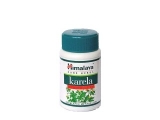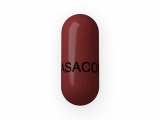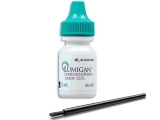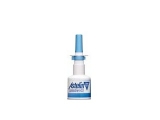Pharmaceuticals in water systems
The use of pharmaceuticals has significantly improved human health and quality of life. However, the presence of pharmaceuticals in water systems has become a growing concern in recent years. As a result of improper disposal and excretion, pharmaceuticals find their way into rivers, lakes, and groundwater, posing a potential threat to aquatic ecosystems and human health.
Pharmaceuticals have been detected in both surface water and groundwater, as well as in drinking water supplies. These drugs can enter the environment through a variety of pathways, such as wastewater treatment plants, agricultural runoff, and septic systems. Once in the water, they can persist for long periods of time and accumulate in aquatic organisms, leading to potential ecological disruptions.
The impact of pharmaceuticals on water systems is multifaceted. Some drugs, such as antibiotics and hormonal contraceptives, can disrupt the balance of microorganisms in aquatic environments, leading to the proliferation of antibiotic-resistant bacteria and altering the structure of aquatic food webs. Additionally, certain pharmaceuticals can affect the reproductive and developmental processes of aquatic organisms, leading to population declines and ecosystem destabilization.
The presence of pharmaceuticals in drinking water supplies is also a concern for human health. Although the concentrations of these drugs are generally low, long-term exposure to pharmaceuticals through drinking water may have detrimental effects on human health. Some drugs, such as antibiotics and hormones, have the potential to promote the development of antibiotic resistance in bacteria and disrupt the endocrine system, resulting in adverse health effects.
It is crucial to develop effective strategies to mitigate the impact of pharmaceuticals on water systems. This includes improved pharmaceutical disposal methods, stricter regulations on the release of pharmaceuticals into the environment, and the implementation of advanced water treatment technologies to remove pharmaceutical contaminants. By addressing these issues, we can ensure the protection of both aquatic ecosystems and human health.
The Environmental Impact of Pharmaceuticals in Water Systems
Pharmaceuticals are an essential part of modern healthcare, but their presence in water systems can have significant environmental impacts. When pharmaceuticals are excreted by humans or animals, they can enter wastewater treatment plants where they are not effectively removed. As a result, these compounds can end up in rivers, lakes, and groundwater, posing a threat to aquatic ecosystems.
One of the main concerns about pharmaceuticals in water systems is their potential to disrupt the natural balance of aquatic organisms. Even at low concentrations, certain pharmaceuticals can have adverse effects on fish and other aquatic species. They can interfere with their reproductive systems, alter their behavior, and impair their growth and development. These impacts can have cascading effects throughout the ecosystem, leading to population declines and disruptions in the food chain.
Another concern is the potential for the development of antibiotic resistance. Wastewater treatment plants are not designed to remove antibiotics effectively, and their presence in water systems can contribute to the spread of antibiotic resistance genes. This can have serious implications for public health by reducing the effectiveness of antibiotics in treating infections. Furthermore, the presence of pharmaceuticals in water systems can also contaminate drinking water sources, potentially exposing humans to these compounds.
The issue of pharmaceuticals in water systems is complex and requires a multi-faceted approach to address it. Efforts should focus on improving wastewater treatment processes to remove pharmaceuticals more effectively. Additionally, public awareness campaigns can educate people about the proper disposal of unused medications and the potential impacts of pharmaceuticals on the environment. Furthermore, research is needed to better understand the long-term effects of pharmaceuticals in water systems and develop strategies to mitigate their environmental impact.
In conclusion, the presence of pharmaceuticals in water systems can have significant environmental impacts on aquatic ecosystems and public health. It is crucial to address this issue through improved wastewater treatment processes, public education, and further research to protect our water resources and ensure the sustainability of our ecosystems.
Contamination Sources
The contamination of water systems by pharmaceuticals can come from various sources. One major source is the improper disposal of unused medications. When people throw away or flush medications down the toilet, the active compounds can end up in water sources, such as rivers and lakes. Another source of contamination is the excretion of pharmaceuticals by humans and animals. When medications are metabolized by the body, some of the compounds are not fully absorbed and are excreted through urine and feces. These compounds can then enter wastewater treatment plants and eventually make their way into water systems.
Agricultural activities can also contribute to the contamination of water systems. Pharmaceuticals are sometimes used in livestock farming to promote growth and prevent diseases. The use of these medications can result in the excretion of pharmaceutical residues by animals, which can end up in soil and water through runoff or the application of manure as fertilizer. Additionally, the disposal of pharmaceutical waste from manufacturing plants can be a significant source of contamination. If not properly treated or contained, the waste can leach into groundwater or be discharged directly into water bodies.
Another potential source of pharmaceutical contamination is the improper disposal of expired or unused medications in healthcare facilities. It is estimated that a significant amount of medication waste is generated in hospitals, clinics, and pharmacies. If these medications are not disposed of in a proper and controlled manner, there is a risk that they could end up in water systems. Finally, the use of personal care products, such as sunscreen, lotions, and shampoos, can also contribute to the contamination of water systems. These products often contain pharmaceutical compounds that can be washed off the body and enter water sources through wastewater.
Effects on Aquatic Life
Pharmaceuticals that enter water systems can have significant effects on aquatic life. These chemicals can disrupt the normal functioning of ecosystems and have the potential to cause harm to organisms that live in water habitats.
One of the main concerns is the impact that pharmaceuticals can have on fish populations. Studies have shown that exposure to certain medications can affect fish behavior, reproduction, and development. For example, some antidepressant medications have been found to make fish more aggressive, while others can impair their ability to reproduce.
In addition to fish, other aquatic organisms such as amphibians and invertebrates can also be affected by pharmaceuticals in water systems. These substances can alter the physiology and behavior of these organisms, potentially leading to declines in population numbers and disruptions in the food chain.
Furthermore, the presence of pharmaceuticals in water systems can lead to the development of antibiotic-resistant bacteria. When these medications are excreted by humans or animals and enter water sources, bacteria in the environment can be exposed to low doses of antibiotics. This exposure can promote the survival and proliferation of resistant strains, posing a significant threat to public health.
Overall, the effects of pharmaceuticals on aquatic life are a growing concern. Efforts should be made to minimize the presence of these substances in water systems through proper disposal and improved wastewater treatment processes.
Human Exposure and Health Risks
Human exposure to pharmaceuticals through water systems can occur through several pathways, including ingestion of contaminated water, consumption of aquatic organisms that have been exposed to pharmaceuticals, and exposure to pharmaceuticals in the environment through dermal contact.
Ingestion of contaminated water: When pharmaceuticals are present in water systems, individuals who consume the contaminated water can be exposed to these compounds. This can result in direct effects on human health, such as adverse drug reactions, as well as potential long-term health risks associated with chronic exposure to low levels of pharmaceuticals.
Consumption of aquatic organisms: Aquatic organisms, such as fish, can accumulate pharmaceuticals in their tissues when exposed to contaminated water. When humans consume these organisms, they can be exposed to the pharmaceuticals that have bioaccumulated in their bodies. This can result in potential health risks, especially if the pharmaceuticals have toxic effects on humans.
Dermal contact with pharmaceuticals: In addition to ingestion, humans can also be exposed to pharmaceuticals in the environment through dermal contact. This can occur when individuals come into direct contact with water or soil that has been contaminated with pharmaceuticals. While dermal exposure may not result in immediate health effects, it can potentially contribute to long-term exposure and accumulation of pharmaceuticals in the body.
Health risks: The presence of pharmaceuticals in water systems has raised concerns about the potential health risks associated with human exposure. Some pharmaceuticals have been found to have toxic effects on humans, even at low levels of exposure. These effects can range from mild, such as allergic reactions, to more severe, such as organ damage or cancer. Additionally, the long-term effects of chronic exposure to low levels of pharmaceuticals are not well understood and further research is needed to fully assess the potential health risks.
Wastewater Treatment Technologies
Ensuring the safe treatment of wastewater is crucial for maintaining a healthy water system. There are several wastewater treatment technologies available that help remove pharmaceuticals and other contaminants from water before it is released back into the environment.
1. Physical Treatment
Physical treatment processes involve the use of physical processes to separate solid particles from the wastewater. These processes may include sedimentation, filtration, and screening. Sedimentation allows heavier particles to settle at the bottom of a tank, while filtration removes smaller particles through the use of porous materials. Screening, on the other hand, involves the use of screens to remove larger debris from the wastewater.
2. Chemical Treatment
Chemical treatment processes involve the use of chemicals to help remove contaminants from the wastewater. Coagulation and flocculation are common chemical treatment methods where chemicals are added to the wastewater to form larger particles that can be easily separated. Another chemical treatment method is oxidation, where chemicals like chlorine or ozone are used to break down and remove contaminants.
3. Biological Treatment
Biological treatment processes involve the use of microorganisms to break down and remove contaminants from the wastewater. One common biological treatment method is activated sludge, where a mixture of wastewater and microorganisms is aerated to encourage the growth of bacteria that help break down organic matter. Another method is constructed wetlands, where plants and microorganisms in a wetland environment help remove contaminants through natural processes.
4. Advanced Treatment Technologies
Advanced treatment technologies are used when conventional treatment methods are insufficient to remove specific contaminants. These technologies may include membrane filtration, advanced oxidation processes, and granular activated carbon. Membrane filtration uses membranes with small pores to remove contaminants, while advanced oxidation processes involve the use of advanced chemical reactions to break down contaminants. Granular activated carbon is often used to adsorb and remove organic compounds from the wastewater.
Overall, wastewater treatment technologies play a vital role in ensuring the removal of pharmaceuticals and other contaminants from water systems. The combination of physical, chemical, biological, and advanced treatment methods helps protect the environment and maintain a safe water supply.
Future Solutions and Recommendations
The impact of pharmaceuticals on water systems is a growing concern that requires immediate attention and action. Here are some future solutions and recommendations to address this issue:
1. Improved wastewater treatment
Investing in advanced wastewater treatment technologies is crucial to effectively remove pharmaceutical compounds from wastewater before it is released into water bodies. This includes upgrading existing treatment plants and implementing new treatment methods such as advanced oxidation processes and membrane filtration.
2. Encouraging proper disposal
Educating the public about the importance of proper disposal of unused or expired medications is essential. Implementing drug take-back programs, where individuals can safely return their medications for proper disposal, can help prevent pharmaceuticals from entering water systems.
3. Enhancing pharmaceutical manufacturing practices
The pharmaceutical industry should adopt green manufacturing practices to minimize the release of pharmaceutical compounds into water systems during production. This includes optimizing processes, implementing effective waste management systems, and utilizing greener alternatives in drug formulation.
4. Monitoring and regulation
Regular monitoring of water bodies for the presence of pharmaceuticals is necessary to identify hotspots and understand the extent of contamination. Authorities should establish regulations and guidelines to limit the discharge of pharmaceutical compounds into water systems, setting stringent limits for allowable concentrations.
5. Research and innovation
Continued research is needed to understand the effects of pharmaceuticals on aquatic ecosystems and develop innovative solutions to mitigate their impact. Funding should be allocated to support research projects focused on finding new technologies for the detection and removal of pharmaceutical compounds in water systems.
In conclusion, addressing the impact of pharmaceuticals on water systems requires a multi-faceted approach involving improved wastewater treatment, proper disposal practices, green manufacturing, monitoring and regulation, and continued research and innovation. By implementing these future solutions and recommendations, we can work towards reducing the presence of pharmaceutical compounds in water systems and safeguarding the environment and human health.
Follow us on Twitter @Pharmaceuticals #Pharmacy
Subscribe on YouTube @PharmaceuticalsYouTube





Be the first to comment on "Pharmaceuticals in water systems"